March 28, 2017 Auroras
Chippewa National Forest.
The corotating interaction region (CIR) had passed the night before, and now we were in a coronal hole high speed stream. Earth's magnetosphere was unsettled with occasional G2 storming conditions. I headed north after sunset to watch the northern lights pop out with the stars.
My first stop was Pughole Lake. The mild weather conditions were melting lake ice, so this week would probably be the last chance this season to get out on the ice and have flexibility of foregrounds that a frozen lake provides. Pughole Lake is a convenient spot to check the auroras because it is close to several other lakes where I like to shoot, but it's the fastest to get to, so I can see what the auroras are like and decide which of the other lakes would be best for shooting. Tonight, the sunset revealed a bright band of auroras, about 10 degrees above the horizon, that quickly gave way to violet auroras and dimmer green auroras below.
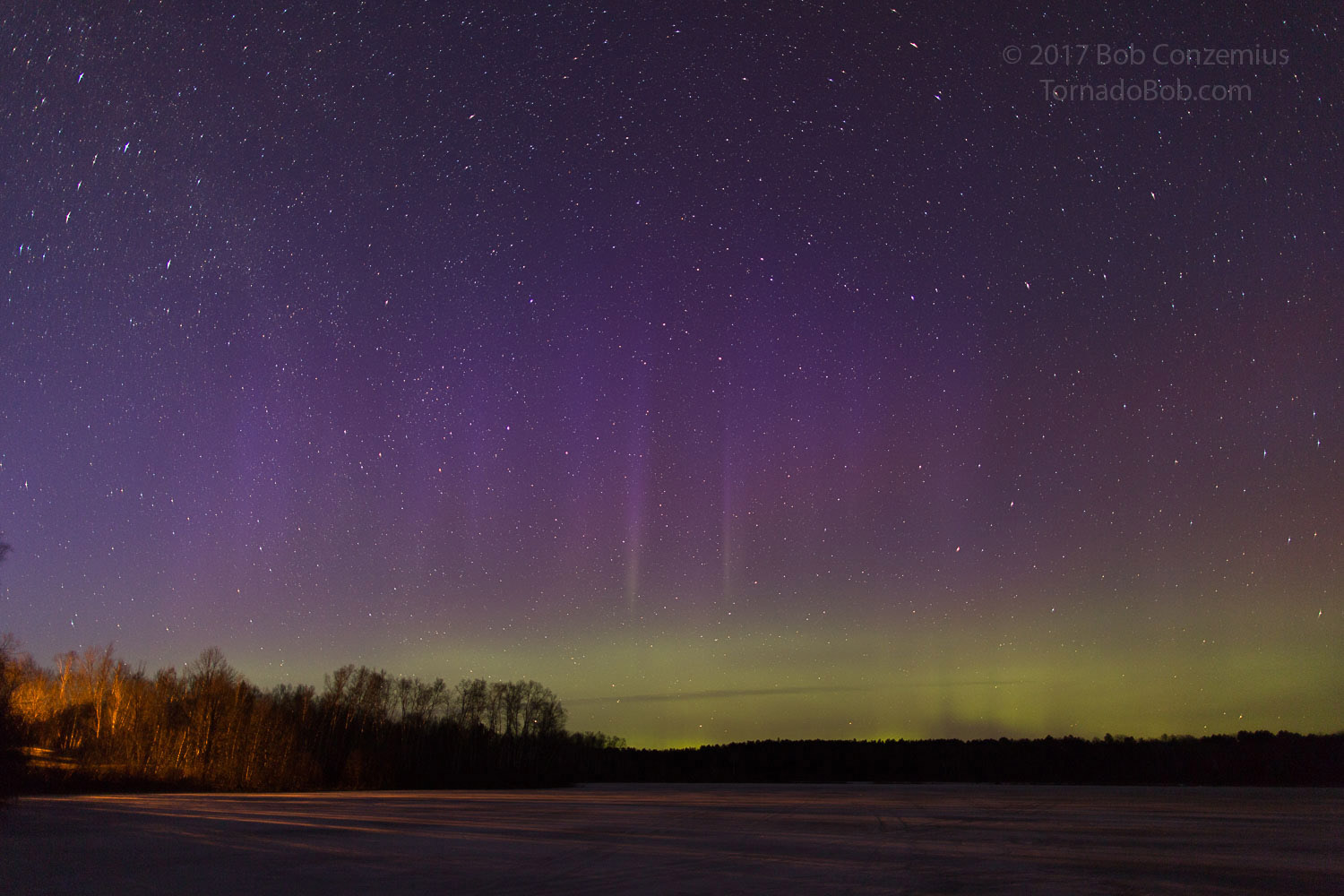 |
| First auroras I shot this evening. Moments earlier, there had been a single, bright green band of auroras. |
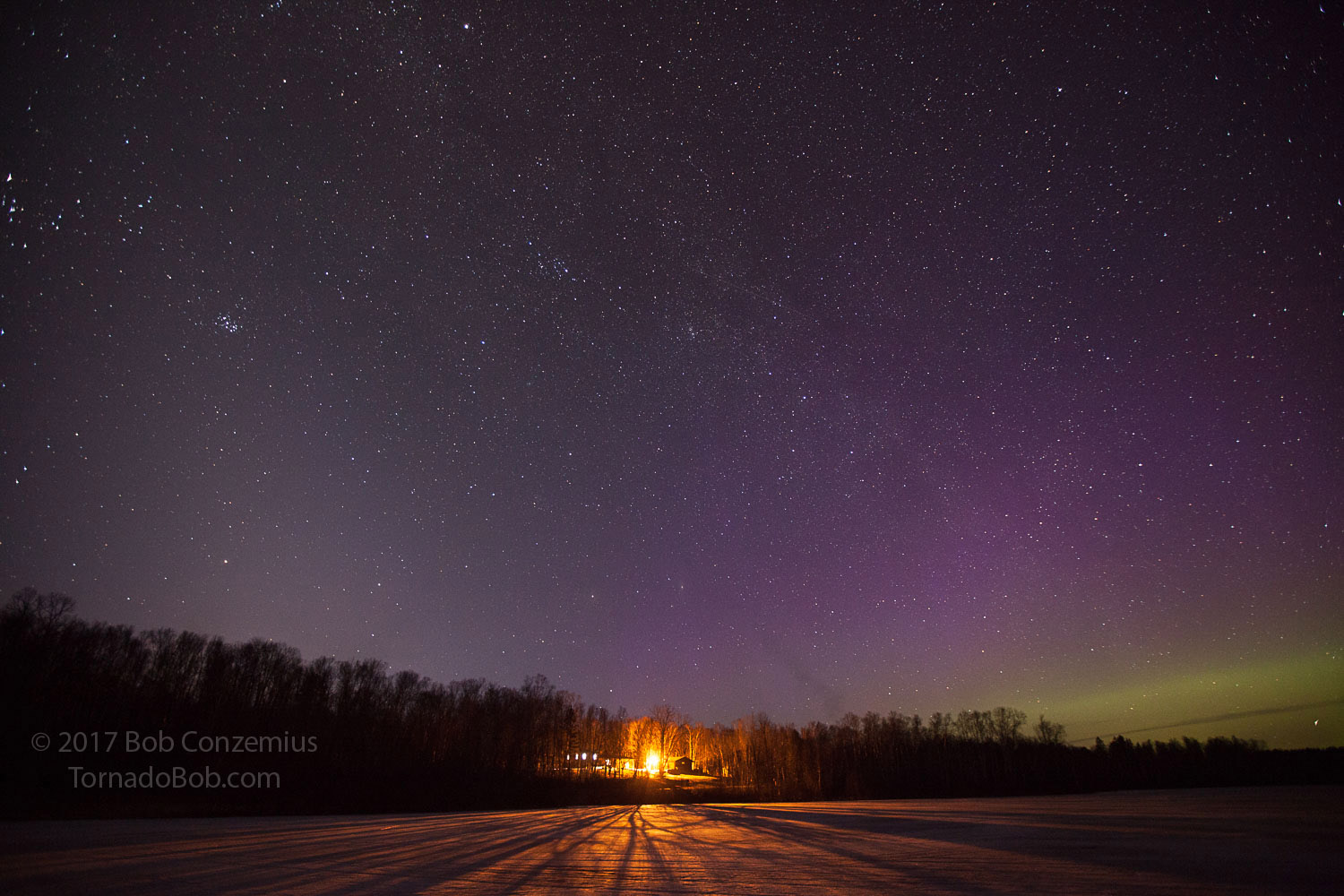 |
| Zodiacal light, a yard light, and northern lights. |
There are enough yard lights, dogs, and passing cars to disrupt the shooting experience on Pughole, so I decided to drive a little farther north. I was headed for Caribou Lake, but because I had driven so far the night before, I wanted to shorten my distance a bit. I stopped at Day Lake and settled in to the canoe landing there. I shot for a couple hours and watched one substorm. It looked like another might unfold, but I decided I needed to get back home and get some sleep.
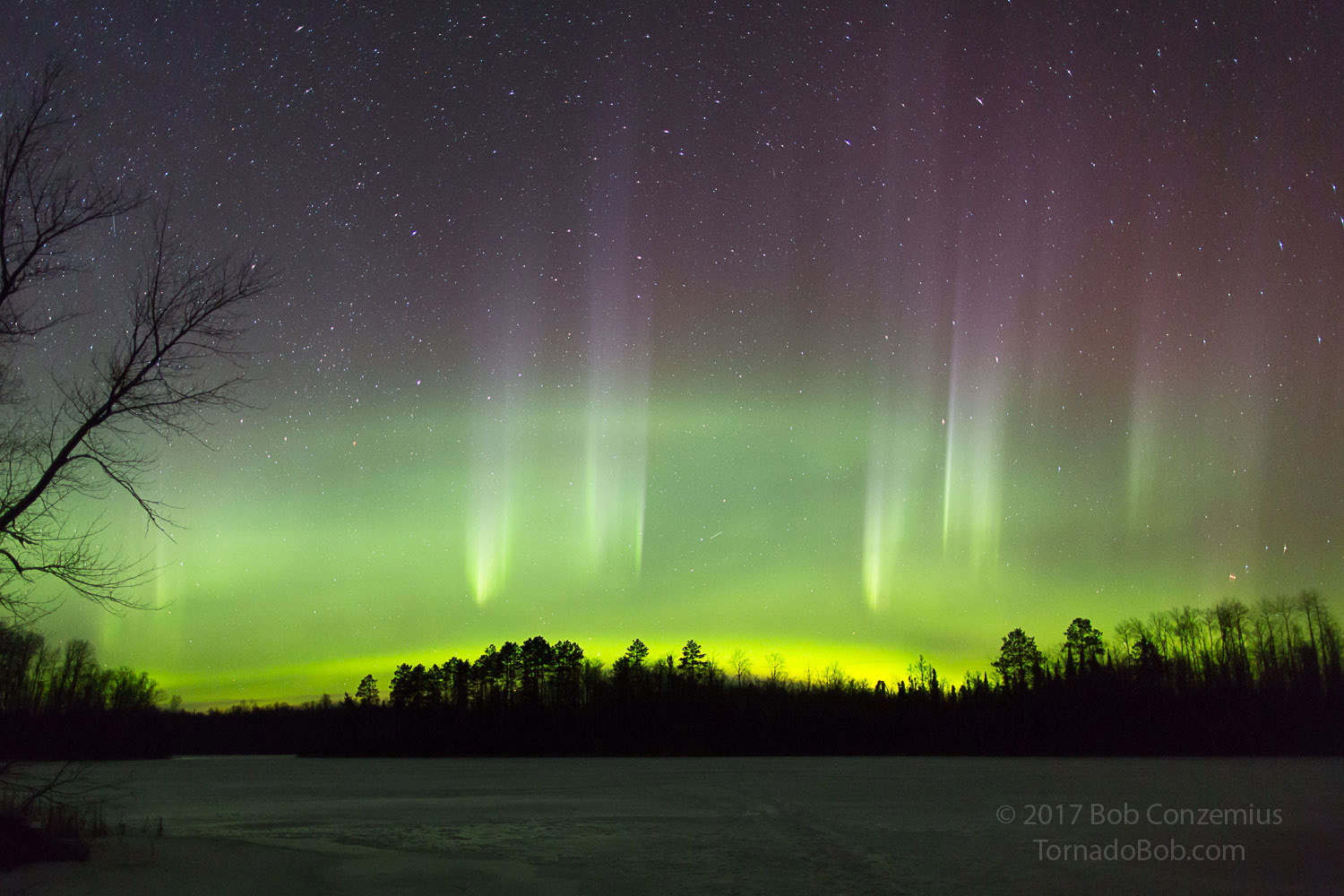 |
| An auroral substorm. |
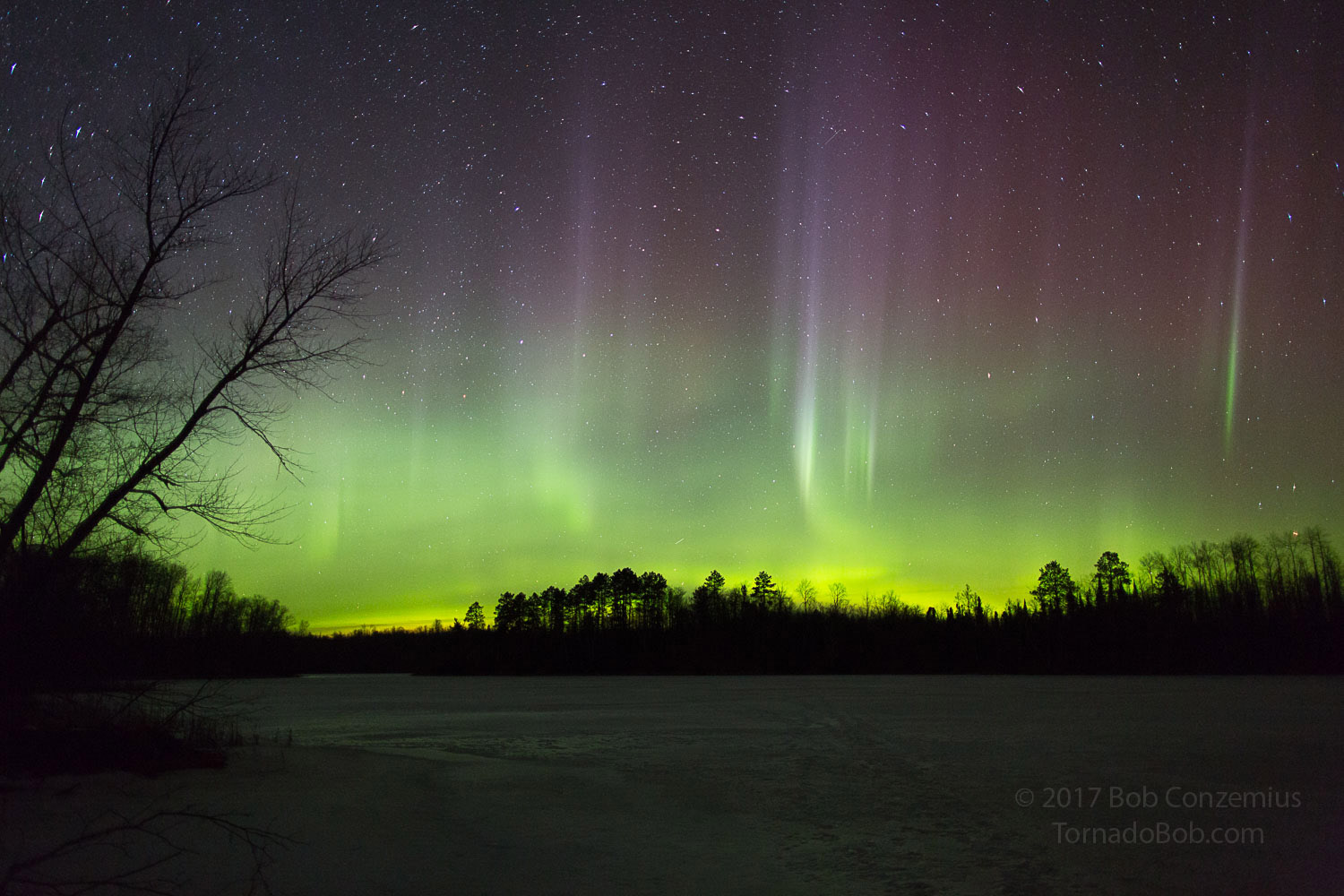 |
| Multiple colors on Day Lake. |
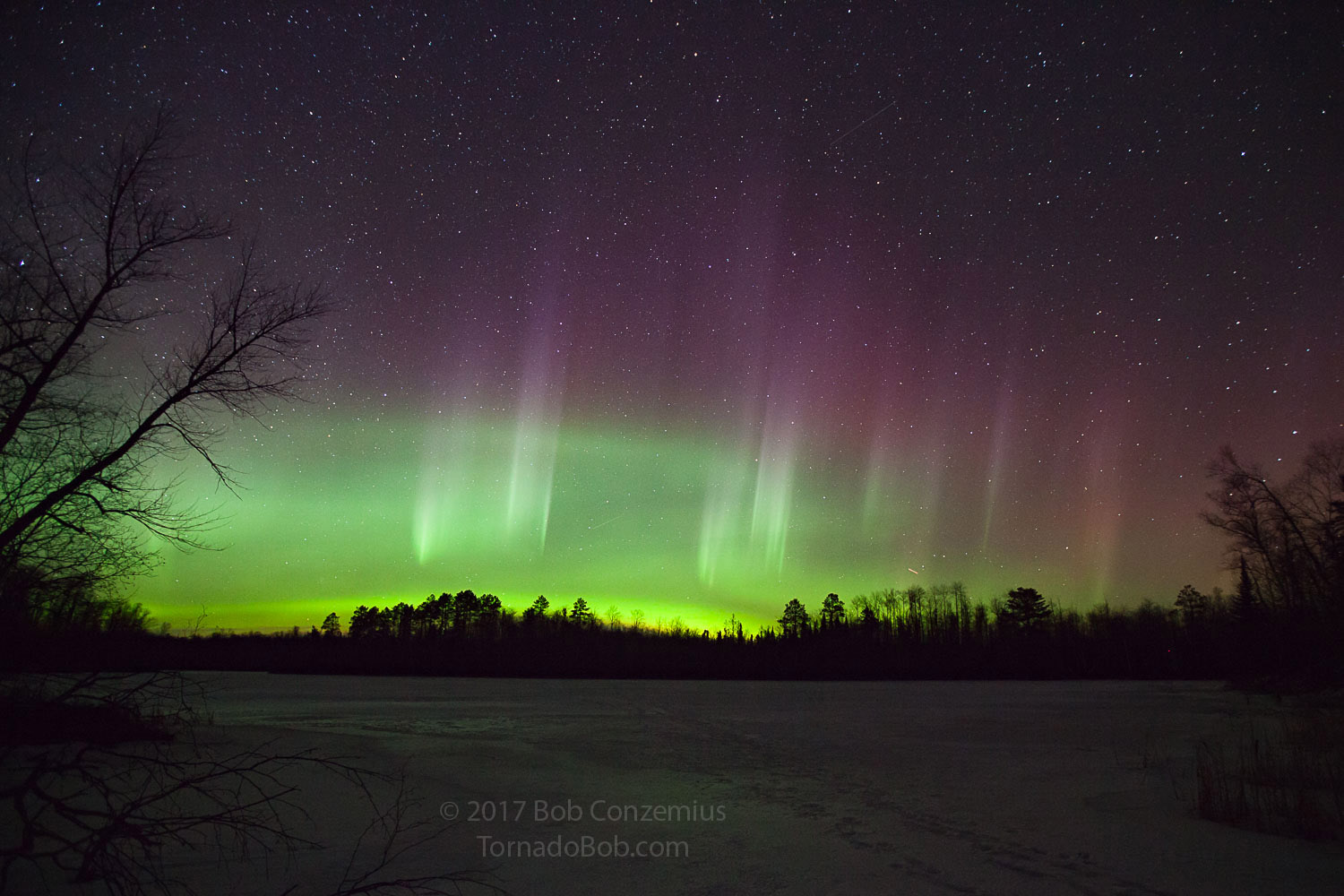 |
| Same scene shot with a wider angle lens. |
Back to Auroras | Home